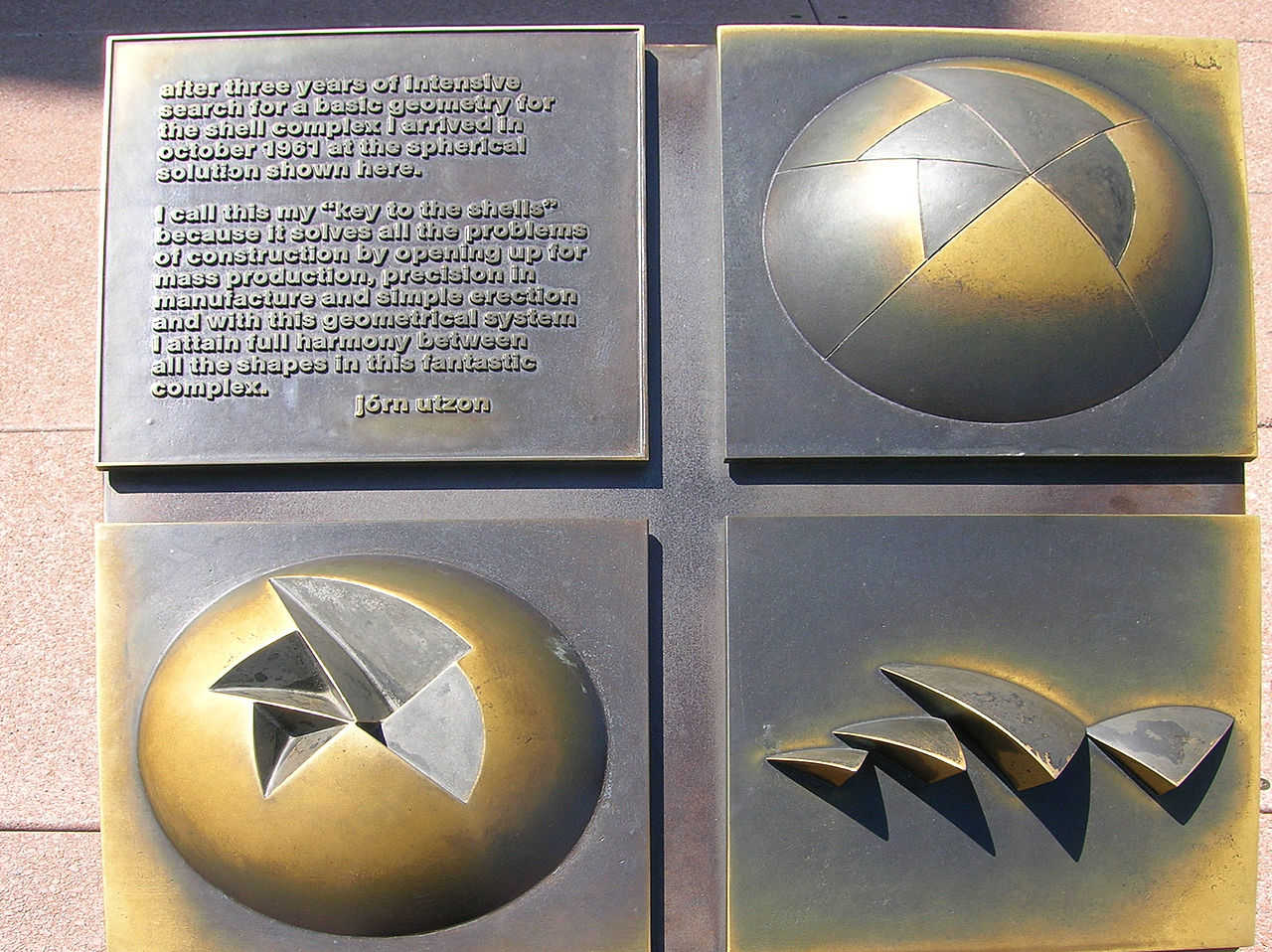
When architect Jørn Utzon submitted his plan for the Sydney Opera House, the shapes of the roof vaults were not defined geometrically. Without this information, engineers couldn’t calculate the complex forces and strains involved and make a plan for construction.
The team spent three years and hundreds of thousands of working hours trying to define the shapes as paraboloids and ellipsoids. Finally, in 1961, they realized that all the half-shells could be cut from the surface of a common sphere (below). This would lend a visual harmony to the whole complex and, since a sphere’s curvature is the same in all directions, it would permit the materials to be mass-produced.
“Each half-shell is now a spherical triangle,” explains University of Sydney mathematician Joe Hammer. “One side of the triangle is the ridge that is part of a small circle of the sphere. The other two vertices of the triangle are on the ridge. Each side shell is also a spherical triangle, the boundaries of which are small circles of the common sphere.”
In awarding Utzon the Pritzker Prize in 2003, Frank Gehry said, “Utzon made a building well ahead of its time, far ahead of available technology, and he persevered … to build a building that changed the image of an entire country.”
(Joe Hammer, “Mathematical Tour Through the Sydney Opera House,” Mathematical Intelligencer 26:4 [September 2004], 48-52.)

